Letters in Solidarity - Developing Our Vision for Strong Schools

As we somehow move closer to 2024(!), SDEA union educators are ramping up our input process for our reopener contract negotiations and getting ready to finalize the priorities that will guide bargaining with the District starting in February. Reopener negotiations are mid-contract discussions to adjust limited items in our 3-year contract which runs until June 2025. SDEA elected leaders at every school and program are convening union meetings and SDEA members will provide feedback on 4 key areas that will be bargained: wages, transfers, evaluations and housing.
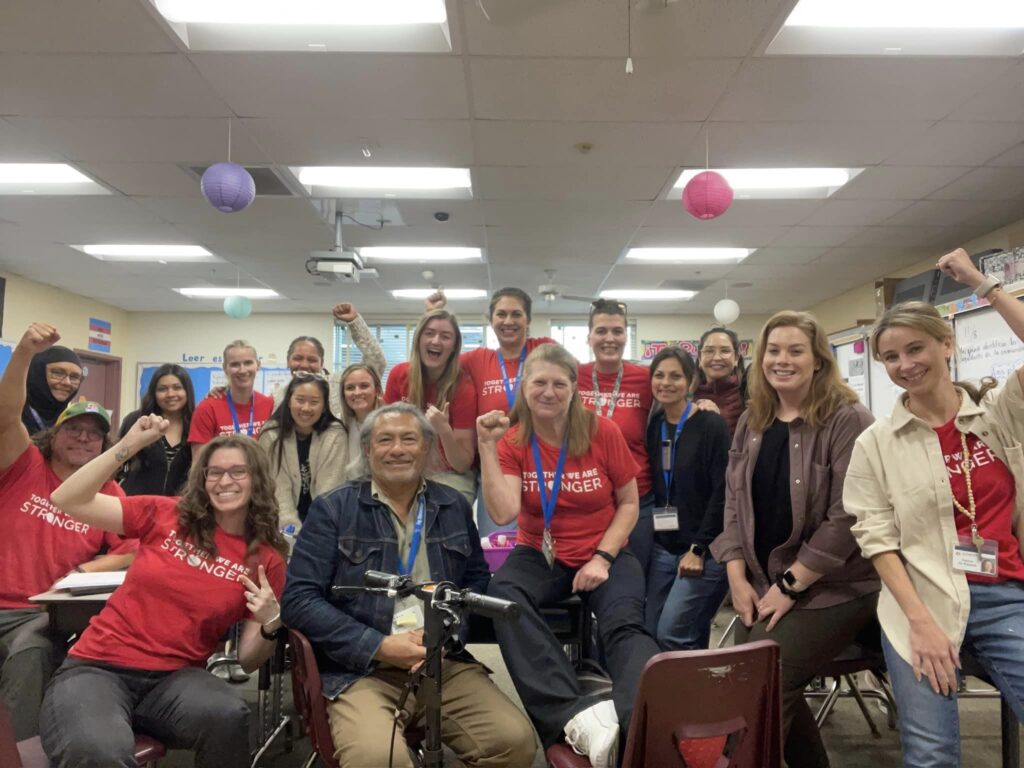
Last school year, an overwhelming majority of SDEA members voted to approve our new contract. This contract contains a 15% wage increase over two years, the largest 2-year increase in over 30 years. On top of the massive pay improvements, the contract includes significant new rights for elementary enrichment and prep time, special education workload, parental leaves, counselor staffing and secondary PE class sizes. All of this was made possible through 1) our collective organizing efforts last school year with thousands of SDEA union educators mobilizing during our contract campaign, 2) our partnership with the SDEA-endorsed pro-educator and pro-public education SDUSD school board and 3) California’s unprecedented tax revenue that is projected to decrease to historic norms for next school year.
A critical financial support for our district the last few years has been federal COVID relief funds. These will be expiring at the end of this school year and will result in a $160 million cut to the district’s budget. Positions that have been fully or partially funded through this federal revenue include Resident Visiting Teachers, Health Techs and Assistant Principals. Student enrollment and attendance has seen a precipitous decline since the beginning of the pandemic and the District will need to make difficult financial decisions in the coming months to balance staffing for next school year. District leadership has committed to prioritizing positions of those working closest with students during the budgeting process and we must continue to advocate as SDEA union educators for the strong schools that SDUSD families deserve.
Our reopener contract campaign will be our first opportunity to continue the momentum from last school year and finish what we started by organizing together to strengthen our schools. The campaign starts with our Bargaining Input Sessions which will inform the demands in our SDEA vision for schools that support student success. Ask your site/program union rep when your school’s Bargaining Input Session is – then be there and weigh in!

UNITED FRONT: Coordinating Our 2025 Contract Campaigns Across California's K-12 Educator Unions

In a groundbreaking collaboration, large teacher union chapters across California, including SDEA, OEA (Oakland), SCTA (Sacramento), UTLA (Los Angeles), UESF (San Francisco), SJTA (San Jose), and others, are joining hands to shape the trajectory of public education in the state. This effort aims to enact substantial improvements for students, educators, support staff, and communities alike through bargaining for our next whole contract negotiations.
The alignment of the expiration dates of our contracts has brought educator union chapters together in a unified front for the first time. This presents an opportunity to leverage our collective strength to amplify our demands. We aim to not only uphold our recent contract victories but also expand funding for our schools. To achieve this, we will take our contract fights to Sacramento and work with broader communities to build a large, diverse movement for California's schools. The four main pillars of this coordination with other unions can be summarized as follows.
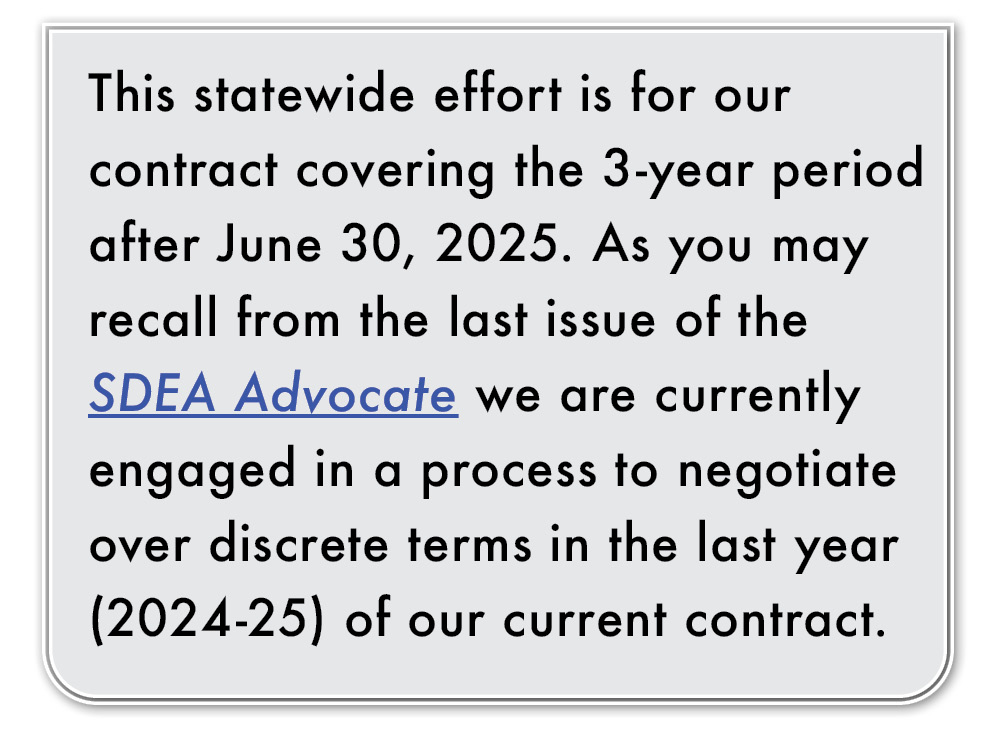
Common Objectives
To start, we'll work together to set shared goals for our contract campaigns, focusing on improving California's public schools. We'll develop strategies that go beyond individual districts and have a statewide impact. These common goals will be developed over the next year, with input from every local chapter's members. Local chapters will still have the freedom to pursue their own local priorities in addition to these shared goals.
Statewide Coordination
Essential to this effort will be establishing a robust, statewide coordinated contract campaign structure. This will facilitate close collaboration among educators across California, pooling efforts to achieve common goals that transcend individual districts.
Strengthening Organizational Capacity
To bolster the chances of success, the chapters are dedicated to increasing membership involvement. This includes expanding participation through site leader training, systematic worksite meetings, utilizing diffused site member leadership teams, and employing other effective tactics to fortify internal union structures.
Inclusive Partnerships
Recognizing the significance of broad support, the united chapters are committed to building meaningful alliances with students, parents, and other community and labor stakeholders who share the common goal of enhancing California's public school system. This cooperative approach aims to create a positive impact on education and cultivate stronger unions throughout all the chapters involved.
The SDEA Board of Directors, composed of elected SDEA members, has already approved the initiative to engage in this collective fight for our schools. The Representative Council, composed primarily of SDEA members elected from school sites and programs, will be discussing this common goals policy at its December 2023 meeting.
$1000 Payment for Early Notification of Retirement
Through a union negotiated agreement, the District is offering a $1000 one-time payment for early notifications of retirement submitted on or before January 15, 2024. If you're considering retiring at the end of this year, you’ll want to pay attention to this agreement; however, if retirement isn't part of your plans at the end of this year, you can disregard this agreement.
- EARLY NOTIFICATION PAYMENT: This early notification payment will be given to anyone who submits their resignation/retirement notice by January 15, 2024, AND whose retirement date will fall between June 7, 2024, and June 30, 2024. The updated agreement now also allows a retirement date of July 12, 2024 for unit members who work the 2024 summer school session if their retirement form is submitted by January 15, 2024.
- AMOUNT/TIMING: The incentive, set at one thousand dollars ($1,000) as a lump sum (minus applicable taxes and withholdings), aims to encourage early retirement notifications for better staffing management districtwide. Eligible participating unit members will receive their payment no later than February 29, 2024.
- IS THIS A RETIREMENT INCENTIVE? This is not a retirement incentive; instead, it aims to encourage early notification of impending retirement among SDEA unit members. The goal is to prevent unnecessary staff excessing at schools in the spring and facilitate better planning for SDUSD's hiring needs for the next school year.
- IS THERE A RETIREMENT INCENTIVE THIS YEAR? No, the District won't offer a retirement incentive in the 2023-2024 fiscal year. The payment in this agreement is specifically for those planning to retire at the end of this school year, aiming to encourage early notification rather than serving as an incentive for retirement itself.
- WHY ISN'T THE DISTRICT PROVIDING A DISTINCT RETIREMENT INCENTIVE THIS YEAR, LIKE THE INCENTIVES OFFERED PREVIOUSLY? The preceding retirement incentive spanned a five-year period from October 2020, and the district is still fulfilling financial commitments from that incentive. Additionally, considering the existing shortage in various job categories, actively encouraging retirements during the 2023-2024 fiscal year—or even within the next two years—would not be advisable. That is why this agreement merely seeks to incentivize notification of retirement by those members who are already committed to retiring at the end of this school year.
- WHAT IS THE PROCESS FOR APPLYING FOR THIS PAYMENT? In order to receive the one-time payment, eligible employees must complete and submit the retirement notification form to Human Resources by the close of business on January 15, 2024. The retirement notification form is located on the HR website and the completed form must be returned via email to hrdocuments@sandi.net.
- For questions or assistance with the retirement process, please contact your Human Resources Officer.
For those planning to retire this year, reviewing the details of this agreement is encouraged. The terms are straightforward, and eligible unit members can claim the incentive by submitting their retirement notification by the specified deadline.
Four Important Insights About the District's Budget, It's Not as Dire as You May Have Heard

In the words of Mark Twain, "there are three kinds of lies: Lies, Damned Lies, and Statistics." These wise words hold true today, especially when it comes to our district’s budget. Some administrators have been painting a rather gloomy picture of our financial situation, often attributing it to the significant wage increases won by SDEA members in the last contract campaign. The good news is that even SDUSD Superintendent Jackson has been pushing back on the narrative that our wage agreement from last year is leading to a budget crunch. However, it's still important to separate fact from fiction and establish a more realistic outlook, especially as we approach reopener negotiations later in the school year. So, what's the real story behind the SDUSD budget? Here are four key insights that provide clarity.
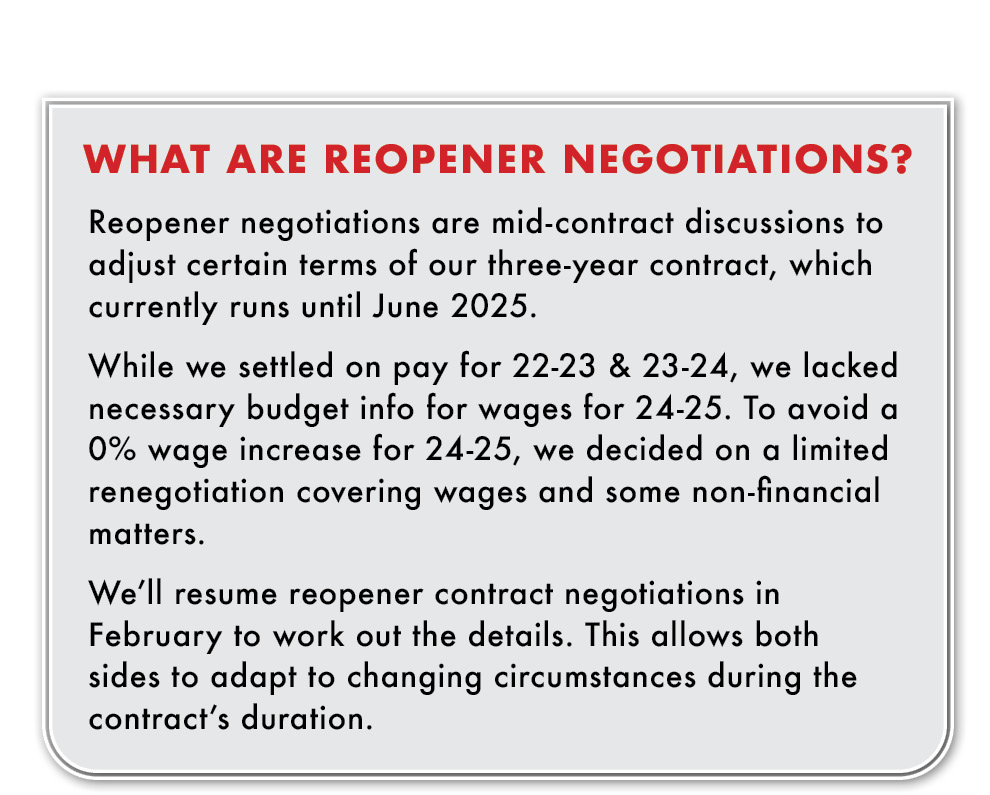

The District's budget deficit has been portrayed as massive, sparking concerns about major cutbacks. However, it's essential to examine the foundation of the District's budget. For instance, health benefits costs have been rising by an average of about 9.5% annually, as per data from VEBA. Inflated health insurance rates are affecting San Diego Unified, which fully funds our health benefits. But here's the twist: the SDUSD budget assumes an almost 19% increase in health benefit costs, tacking on approximately $20 million unnecessarily to a possible deficit. Similar discrepancies can be found in other areas, like a $10 million increase in the budget for books and supplies, well above typical annual expenditures. These unrealistic assumptions create a paper deficit that might not match the true financial situation.

Raising alarms about next year's budget at this stage may be a bit hasty. Why? Well, because we lack crucial information about the state's funding for the upcoming year. The state budget is expected to provide additional funding to the District, it might not be as generous as in previous years, but it will nonetheless be expected to be a new ongoing increase in funding. So, it's prudent to hold off on dire predictions.
Also, the first interim report, which typically gets published in December, and offers a close look at the District's actual spending for the year, has yet to be finalized. This report is more than just numbers on paper; it provides an invaluable snapshot of the District's expenses up to that point. While the annual budget involves a bit of crystal ball gazing, the interim report paints a clearer picture of our actual budget situation.
Intriguingly, there's another development on the horizon. Enrollment trends seem to be stabilizing, a factor that doesn’t appear to have been considered in the District's initial budget assumptions, which were based on expectations of continued declining enrollment. These significant factors are often overlooked by those who paint a gloomy picture of the budget.

Surprisingly, last year, even after implementing wage increases, the District had over $163 million in unrestricted reserves. This surplus is substantial and could potentially cover most genuine deficits, even without accounting for budgetary fluff.

As SDUSD staff receive their full 15% raise, it's expected that many will opt for retirement. This presents an opportunity for the District not to fill positions in areas where additional staffing isn't necessary. This could lead to significant savings in the coming year. However, effective position control is crucial. The District must avoid unnecessary hiring and prioritize staffing in essential areas, all without compromising the quality of services provided to our students.
So, what's the bottom line? Undoubtedly, our wage increases and the costs associated with maintaining fully paid benefits will impact the District's budget. While enrollment appears to be stabilizing, we've lost a significant number of students in recent years, resulting in a decline in average daily attendance. However, the state has consistently increased per-pupil funding, which should allow us to modestly increase compensation in the upcoming renegotiations. It's important to note that these increases may not match the levels experienced in recent years but are more likely to align with historical averages.
Letters in Solidarity - Kicking Off Our Next Contract Campaign with Union Power

As always seems to be the case, we are experiencing peaks and valleys on the roller coaster of public education. Through our collective organizing efforts last school year with thousands of SDEA union educators mobilizing to fight for the schools and communities our students deserve, we won a historic new contract with significant salary increases that places us in the top tier of districts in San Diego County. We also protected our fully-paid family health benefits that are the gold standard in our region. On top of that, we were able to make our work in the classroom more manageable by winning improvements to elementary prep time, removing private school assessments off the plates of school site special education staff and ensuring that early childhood and elementary educators are paired in every TK classroom.
And yet, after concluding the disruptive process of balancing staffing at school sites through fall excessing, and despite our best efforts to address staffing shortages through our bargaining wins, we still continue to experience numerous vacancies in our schools. Vacancies impact everyone in school communities across the district as we all have to pick up the slack and stretch ourselves thin to make sure student needs are met. The greatest number of vacancies are in positions serving the highest need populations like students with disabilities, 4 year olds in TK and multilingual learners. Educators in these positions also tend to be early career educators who are at the lower end of our salary schedule.
This year’s monumental 15.5% salary increase resulted in a $16,647 raise for those at the top of our salary schedule. For someone at the bottom of the salary schedule, however, the increase was $7,865 - less than half of what our most experienced educators received. While the raise represents significant progress for all educators, it is also imperative that we do more to attract and retain early career educators who are most acutely impacted by the housing crisis facing our region. San Diego was just ranked the most expensive place to live in the country and two in three San Diegans are considering leaving due to the unsustainable cost of living.
We have the opportunity to address the staffing crisis that deeply impacts our schools through reopener bargaining with the district starting in February 2024 that will cover 4 key areas: wages, professional growth and development, transfers and housing. Starting in November, SDEA Site Leadership Teams will be convening Reopener Bargaining Union Meetings at every school in the district. This will be a chance for all SDEA members to weigh in on the priorities that will guide our bargaining team’s negotiations with the district over our contract for next school year. Our bargaining demands will be informed by your input and brought for adoption to the SDEA Board of Directors and Rep Council through our union’s democratic process.
Our union educator movement is only as strong as the degree to which members at our schools are engaged and ready to fight as a unified force to support our SDEA Bargaining Team. So let’s all do what it takes to build on the success of last year’s contract campaign and start this school year’s Reopener Bargaining Campaign with SDEA Union Power!

SDEA’s 2024 School Board Endorsements

SDEA is endorsing our educator and labor friendly incumbents for the 2024 School Board elections. The endorsed incumbents are:

- Sabrina Bazzo, current board President, representing sub-district A.
- Sharon Whitehurst-Payne, representing sub-district E.
- Richard Barrera, representing sub-district D.
Following our union’s democratic process, the three incumbent candidates all interviewed with members of the SDEA Political Involvement Committee (PIC) on June 1st. The PIC made the recommendation to the SDEA Board to move forward with early friendly incumbent endorsements. The SDEA Board of Directors approved the recommendation and the endorsements were put to the SDEA Representative Council at the August 14th Rep. Council meeting. The elected school site and program representatives approved the endorsement of Sabrina Bazzo, Sharon Whitehurst-Payne, and Richard Barrera for SDUSD Board of Education.
SDEA recently won a historic contract for our educators and these three board members all voted to approve those wins! We need to maintain our pro-educator and pro-labor school board in San Diego Unified. We have seen what happens when school boards become hostile, as evident by actions against educators and students in other Southern California school districts. Members can support these candidates by spreading the word to friends, family members, and neighbors. SDEA members can also donate to our Political Action Committee (PAC) to help fund our political campaign.
There is still time for people to come out against our endorsed candidates.The filing deadline for a candidate to run for school board is December 8, 2023. The primary election is on March 5, 2024. It’s imperative that we stay engaged and actively promote the SDEA endorsed candidates. The top two vote getters will move on to the general election on November 5, 2024. SDEA will keep members informed of any additional information regarding the campaign or possible opponents as we get closer to election day. Members will be encouraged to participate in campaign activities to ensure we are victorious.

New Leaves Notification Deadline - January 1st

In the last round of bargaining, SDEA and SDUSD's bargaining teams agreed to some changes in Article 10, Leaves, in the union contract, which impact the dates by which SDEA bargaining unit members need to submit requests for leave. These changes also impact when unit members need to indicate they intend to return from long-term unpaid leave at the start of the subsequent school year.
Beginning in the 2023 - 2024 school year, Category I long-term unpaid leave requests need to be submitted by January 1, 2024 for leaves anticipated to commence at the start of the 2024 - 2025 school year.
Category 1 long-term leaves are those leaves for professional study, travel, opportunity, service to other public organizations, service to professional organizations, and other leaves determined by the superintendent.
These rules do not apply to leaves under Category II, such as health or home responsibility leaves, or under Category 3, such as military leaves; more information on these leaves can be found in Sections 10.7 and 10.8 in the contract.
Unit members on Category I long-term leaves must notify the Human Resource Services Division on or before January 1 of each year of the leave as to their intention either to extend the leave for another school year (if eligible), to return to paid service at the beginning of the next school year, or to resign from the District.
See Section 10.6 in the union contract for more information on these types of leaves.
Letters in Solidarity - SDEA Leadership is a Movement

A movement is when a group of people with shared interests and common goals move forward using collective action. Our successful contract campaign last year was a movement led by collective action. Our movement had a shared goal of winning a historic contract to Recover, Rebuild and Rise Together. We were successful because we stood together. When we stand together, we win! Our movement continues with new goals. This year, we have identified four common goals for building strong union sites:
Strong, Meaningful Site Governance Teams
Shared decision making is our contract right. The Site Governance Team (SGT) is the structure for shared decision making at sites and programs. The SGT is not the same as SSC or Instructional Leadership Teams. Instructional Leadership Teams are often appointed by administrators and are advisory bodies. They cannot vote to make changes to sites. School Site Councils oversee the site’s federally-funded budgets like Title I and SPSA. SGTs have voting power over many components of a school’s instructional program, including discipline plans. SGTs are composed of elected representatives from all stakeholder groups in the school community. They work together collaboratively while representing the viewpoints of their constituents. High-functioning SGTs have the power to make our schools more successful and inclusive. If you need assistance establishing or improving the effectiveness of your SGT, your AR can reach out to their organizer to schedule a training at your site. Use this rubric to gauge your SGT's effectiveness.
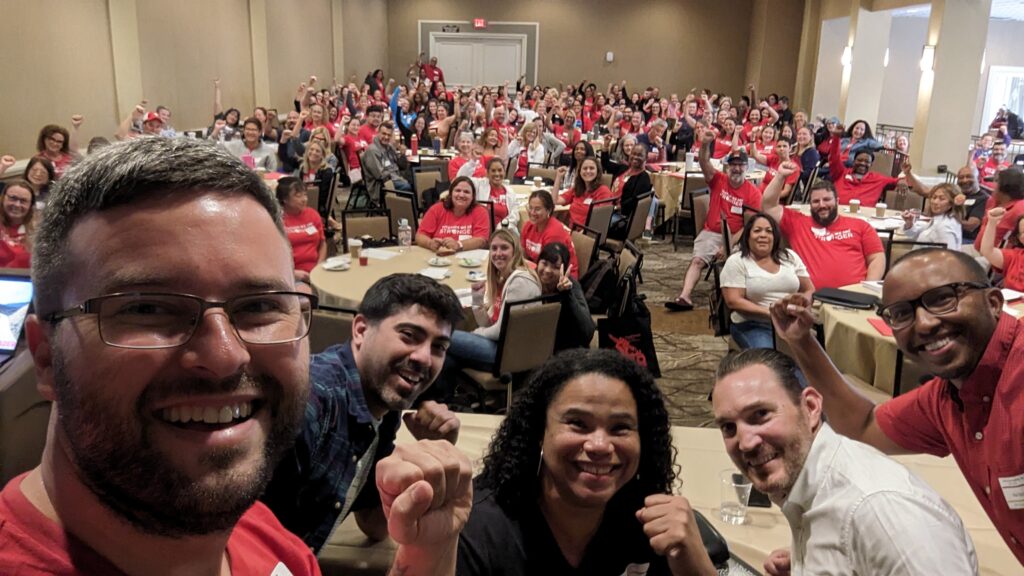
Updated Restorative Discipline Plans
Educators cannot teach and students cannot learn if they do not feel safe. Our contract requires that all sites have a Restorative Discipline Plan that was developed with input from educators, classified staff, families, admin and students where appropriate. The plan must have clear expectations and consequences for student behavior and determine who is responsible for implementation. Having a Restorative Discipline Plan is only the beginning. In order to be effective, RDPs must be implemented with fidelity by staff and admin. Adherence to the RDP is easier to ensure when it has been democratically voted on by the SGT. Effective Restorative Discipline plans are essential for respecting the rights of educators and students.
Outreach and Support for New Educators
New educators are overwhelmed. For most of our new educators, this is their first experience working in a school. They are learning how to do their job and often rely on their more experienced coworkers for guidance with classroom management, content material and how to navigate their school site. For a majority of new members, this is also their first experience with a union. They are often unaware of their rights and feel apprehensive to ask for help. It’s important to let them know that they are part of the union at the site level. They need to know that there is solidarity at their site and being a member of SDEA means you never stand alone.
Strong Site Communication
Sharing information is vital to ensure a strong union school. It’s how we promote solidarity. There are many structures for information sharing within your site or program. Monthly union meetings are the most effective structures for sharing information. Members gather together to hear updates from Rep Council. These updates include bargaining, school board actions, member issues and much more. It’s also a venue to share site issues. Knowing what the issues at your site or program are leads to organizing around the issues and finding a solution. Leadership Teams, CAT teams, bulletin boards, texts and emails all promote communication and unity.
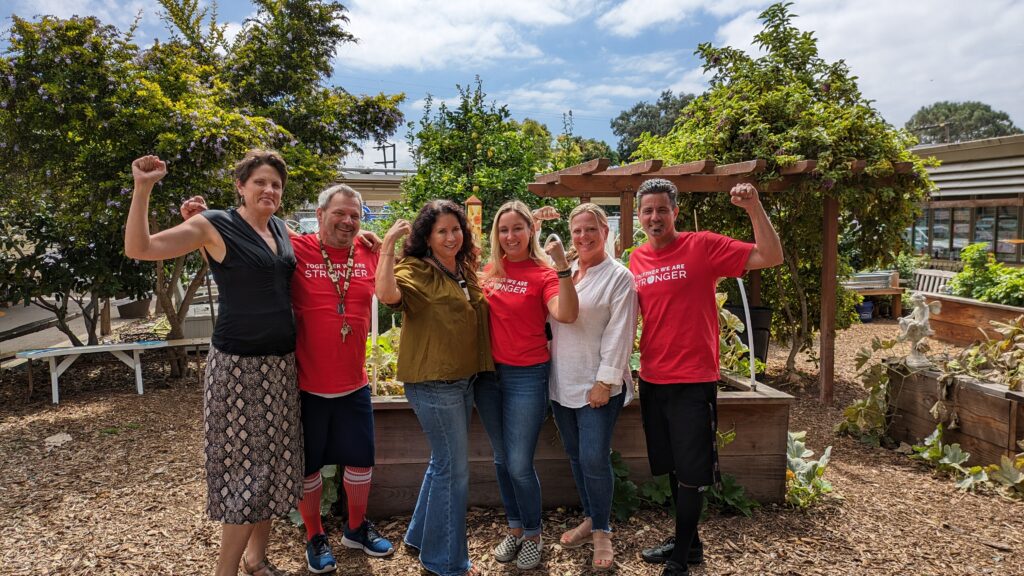
One goal that is steadfast is advancing Solidarity at our sites. Schools with high levels of solidarity enable members to have a stronger voice at their site. Members use their collective voice to achieve a common goal. Sites with solidarity work together to promote respect for our contract and the rights of educators resulting in improved working and learning conditions for the entire educational community. Solidarity leads to shared leadership, allowing all members to participate and contribute. Sharing leadership among members leads to strong union sites by sharing the work and making our goals sustainable. Strong union sites result in a strong, powerful union!

Strengthening Schools: Our Local and Statewide Work to Win the Schools Our Students Deserve
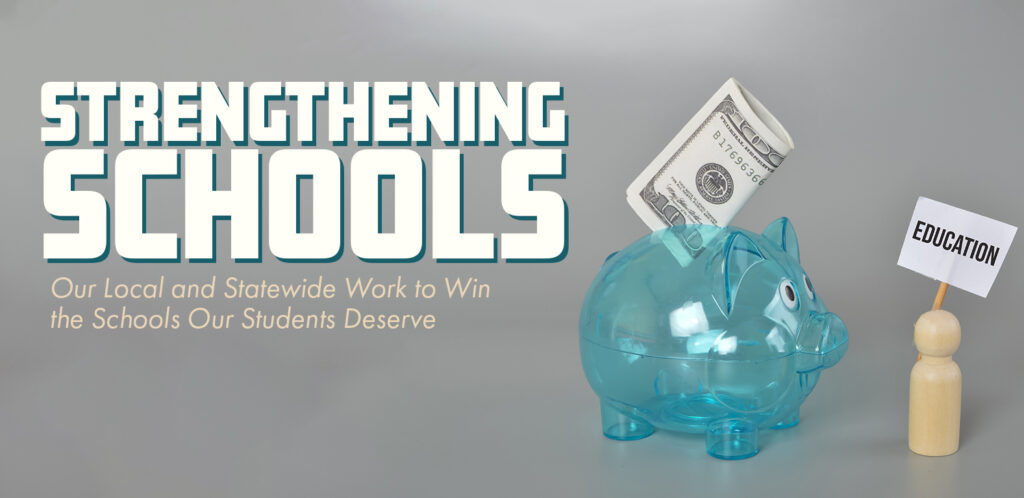
During the past school year, SDEA members engaged in a historic contract campaign, aiming to secure competitive compensation, robust student support, and address broader community needs. Thousands of SDEA members and parents held meetings, rallied, and even participated in a massive school board action. Consequently, we successfully negotiated a transformative contract that will significantly bolster our school's ability to attract top educators while ensuring essential support for students with diverse needs. Additionally, after-school programs will be tailored to meet the specific needs of our community, rather than being imposed from above. This achievement was bolstered by an impressive turnout, with over 84% of eligible voters participating, and an overwhelming 98% approval rate for the contract.
In the coming months, expect to hear concerns from district finance administrators about sustaining these gains. It's important to note, especially for newcomers to the district, that our district's financial outlook tends to err on the side of caution. Despite this, California's schools have witnessed historic increases in funding in recent years, with our recent contract extension being part of this trend. However, as student enrollment continues to decline, it is crucial for the district to effectively manage attrition to align staff numbers with student demographics. While the contract is sustainable, it will require diligent stewardship from the district in the years ahead. Nonetheless, California still lags behind in student funding, ranking in the lowest quartile among states.
In the 2019-20 academic year, California allocated $13,686 per student in state and local funding, ranking 33rd among states. This fell $1,760 below the national average of $15,446 and only amounted to half of New York's per-student funding, which stood at $26,605. This according to a recent study from the Education Law Center. These figures are based on a recent study by the Education Law Center using the latest available school funding data. These figures are based on a recent study by the Education Law Center using the latest available school funding data. Rallying at the SDUSD headquarters, as supportive as it may be, will not alter this challenging reality. To secure increased school funding and safeguard our current gains, we must unite with educators across the state.
Over the next two years, SDEA members will collaborate with educators from California's largest school districts to advocate for improved school funding. This year, we will return to the bargaining table for expedited negotiations regarding potential wage increases for the 2023-2024 school year, known as reopener bargaining. However, next year, we will engage in negotiations for the next three-year contract. In this fight, teachers from Los Angeles, Oakland, San Francisco, San Jose, Sacramento, and numerous other chapters of our statewide union will join forces to protect and expand our achievements. We share a common deadline for contract expiration, and this time, our battle will extend to the decision-makers in Sacramento.
The Rent is Too Damn High: Addressing Staffing Shortages through Affordable Employee Housing

Despite our best efforts to address staffing shortages through our collective organizing last school year and our historic new contract, this school year we continue to feel the impact of numerous vacancies in our schools, especially in positions that serve the highest need populations like students with disabilities, 4 year olds in TK and multilingual learners. This means that we must start exploring solutions to other barriers to becoming an educator in our district like the cost of local housing that has grown astronomically since the beginning of the pandemic.
In 2022, the annual income required to afford a median-price home in San Diego was $212,577. Even with the 15.5% increase in salary we are seeing on this year’s paychecks over last year’s paychecks, the average first year educator in SDUSD makes $62,185. If a couple were both working as early career educators in SDUSD, they would be nowhere near making enough income to be able to buy a home in our region. And according to a recent report by the National Center on Teacher Quality, it would take 25 years to be able to save up enough of our paychecks to afford a 20% down payment on the average San Diego home.
So if SDUSD educators are no longer able to pursue the American Dream of long-term financial security with homeownership, why don’t we just rent? This option is now also severely restricted as San Diego is the most competitive rental market in Southern California and the average monthly rent for a one bedroom home in San Diego is $2,532 a month. San Diego Unified is ranked as the third least affordable school district in the country for new teachers looking to rent one bedroom homes. It would require at least a $101,288 yearly income to be able to afford the rent on the average 1 bedroom San Diego home and remain financially stable by not spending more than the recommended 30% of our income on housing.
As educators, we are responsible for preparing the next generation of students for success but more and more of us cannot afford to live anywhere near the communities we serve. Living so far from our school communities makes it harder to understand the complex dynamics of student environments and be able to connect with them. Every year, growing numbers of educators are moving to places like Temecula and Murrieta and commuting more than an hour one way to schools because the rent is too damn high! Spending this much time in traffic not only contributes to global warming, it also diminishes our ability to focus on meeting student needs with the time and stress associated with our commute.
So what is the solution? While no measure is sufficient on its own to tackle a complex problem like the unsustainable cost of housing, one policy tool at our disposal enabled by recent state legislation is the construction of affordable education workforce housing on surplus district land. The SDEA-endorsed Measure U school bond measure passed in November 2022 and allocates more than $200 million to construct affordable SDUSD employee housing. This will start with units at the current Ed Center on Normal St. once the new district headquarters is built in Kearny Mesa in late 2026. We will need to bargain the parameters for district employee housing including the income threshold for educators living in the units and starting these negotiations is a top SDEA priority.
Imagine a future when new educators can afford to live and work in San Diego Unified, save up money for down payments on homes and reduce greenhouse gas emissions by living closer to our schools and public transportation. Through the efforts of our union to pass Measure U, we are now much closer to making this dream a reality and being the first district in the county to build education workforce housing.







